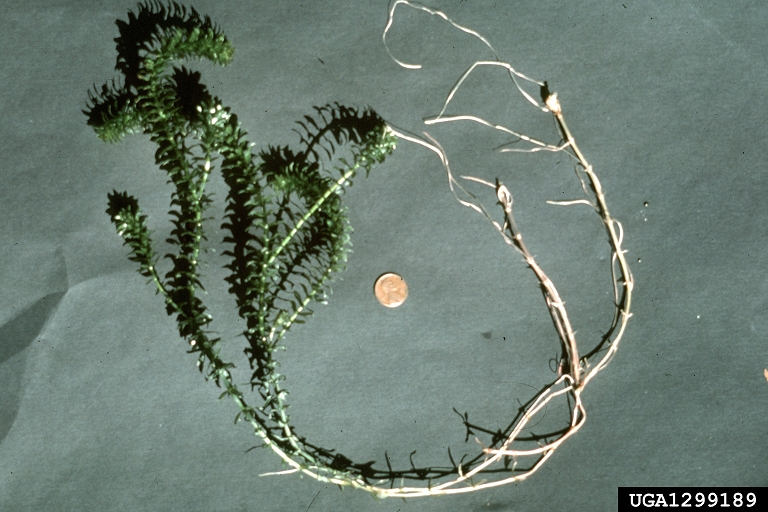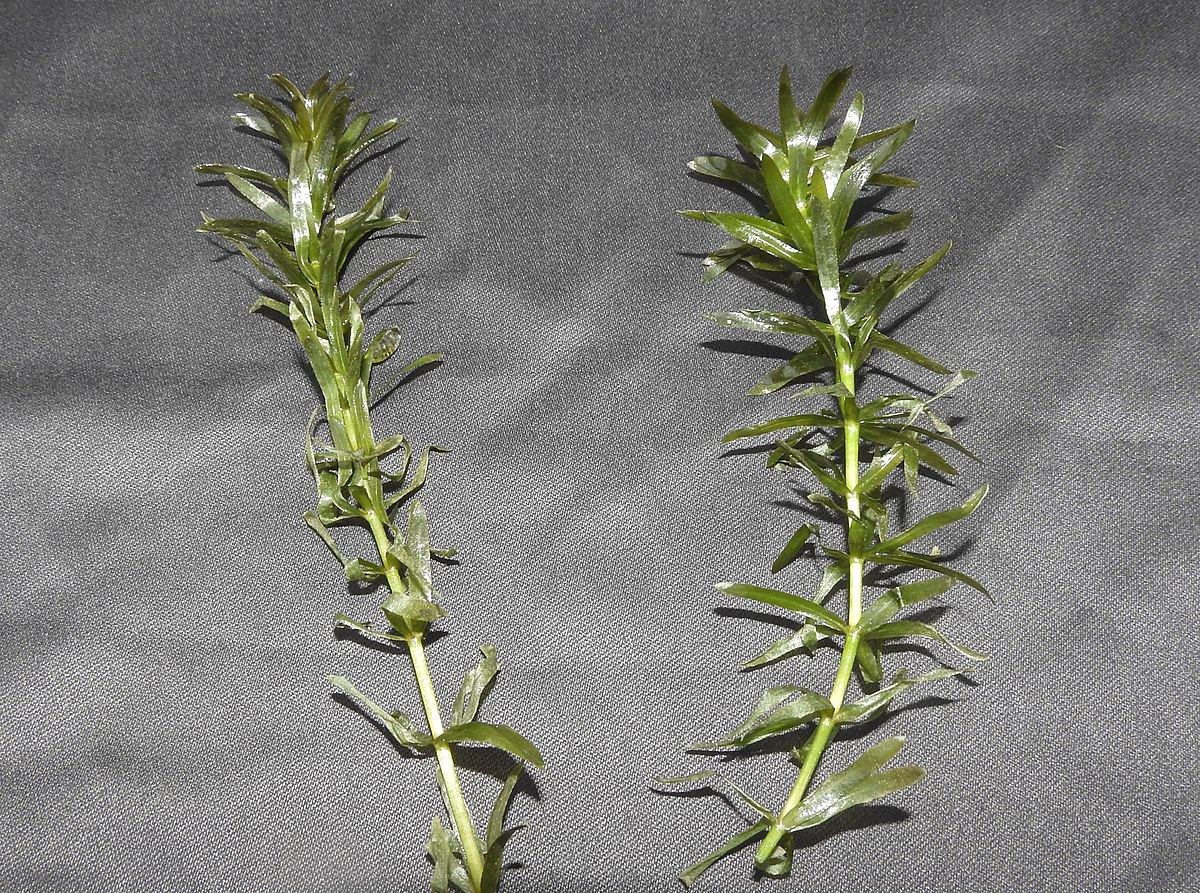Hydrilla

Hydrilla
(Hydrilla verticillata)
Priority: - Prevent / EDRR
Tags: Aquatic
Identification and Reproduction
Identification:
- Hydrilla is a freshwater perennial plant that grows in dense floating masses.
- It can grown from thin roots that help anchor the mass to the ground but it can also grow as a floating mat.
- Stems are heavily branched, thin (about 1mm thick) and can extend 3-9 m long.
- Leaves appear in groups of 4-8, whorled around the stem. They point to a tip and have saw-tooth edges, ranging from green to yellow-brown. It has minute hairs on the underside of the leaves.
- It produces small, white flowers that extend from the leaf axil. Flowers are composed of 3 sepals and 3 petals.
Reproduction:
- This plant can reproduce from broken root fragments.
- It can form turions, which are short shoots that allow the plant to survive through unfavourable growing conditions. Turions help store energy for teh parent plant and will eventually break off. Turions appear as small white, miniature potato-like tubers that form on the end of stems.
- It can grow upto 2.5 cm a day.
Habitat & Ecology
- Hydrilla can be found on every continent except for Antarctica.
- It is very tolerant of pollution, disturbance, low light and carbon dioxide levels.
- Even through it is a freshwater aquatic it can withstand salinity levels up to 7%.
- It is a very adaptable plant and thrives in stagnant or slow-moving waters.
- This plant has been found in rivers, lakes, ponds, wetlands, streams and wet ditches.
- Currently has not been observed in Canada, but is found throughout the US.
Impacts
Social:
- Hydrilla disrupts recreational activities such as fishing, swimming and boating.
- It can also block and slow the flow through waterways and irrigation canals.
Ecological:
- This plant can form dense floating mats that will shade out and out-compete native aquatic plant species for light and nutrients.
- Flooding can also be a consequences of this plant.
- It can alter fish size and population levels.
- Large stands of hydrilla can also reduce water quality by increasing pH levels, decreasing oxygen level and raising the temperature of the waterbody.
- By slowing the movement of water it can also provide a favourable habitat for mosquitoes.
Management
Prevention is a high priority for this species.
- Discarding aquarium material into waterbodies is the main source of contamination. From then it is spread further through boating and catching on to fishing equipment.
- Do not purchase hydrilla for your aquarium and never dump aquarium contents into waterbodies. Either donate unwanted materials to a garden or aquarium store or properly dispose into the garbage.
- Always clean, drain, and dry aquatic equipment like boats or canoes before transferring from one body of water to another.
- Learn to identify hydrilla and avoid fishing or boating through infestations.
- Please report this plant if you think you have seen it.
Resources
Find more information from the NAISMA Hydrilla factsheet.
Find more information from the Government of BC Hydrilla Factsheet.
For more information on Hydrilla and its comparison with Brazilian waterweed check out Ontario's Invading Species page for Hydrilla here.
Header photo (Yeraud-elango).




